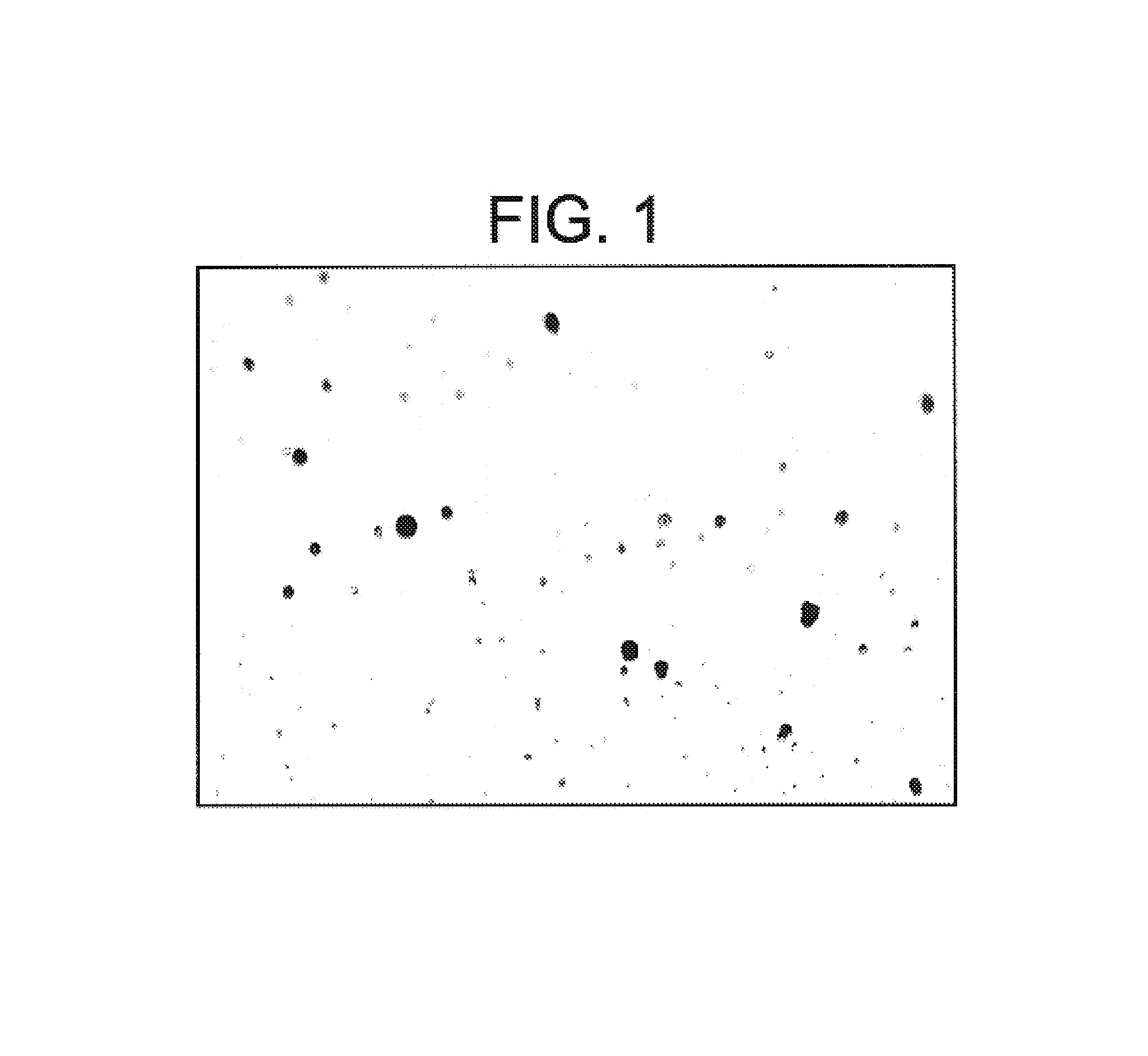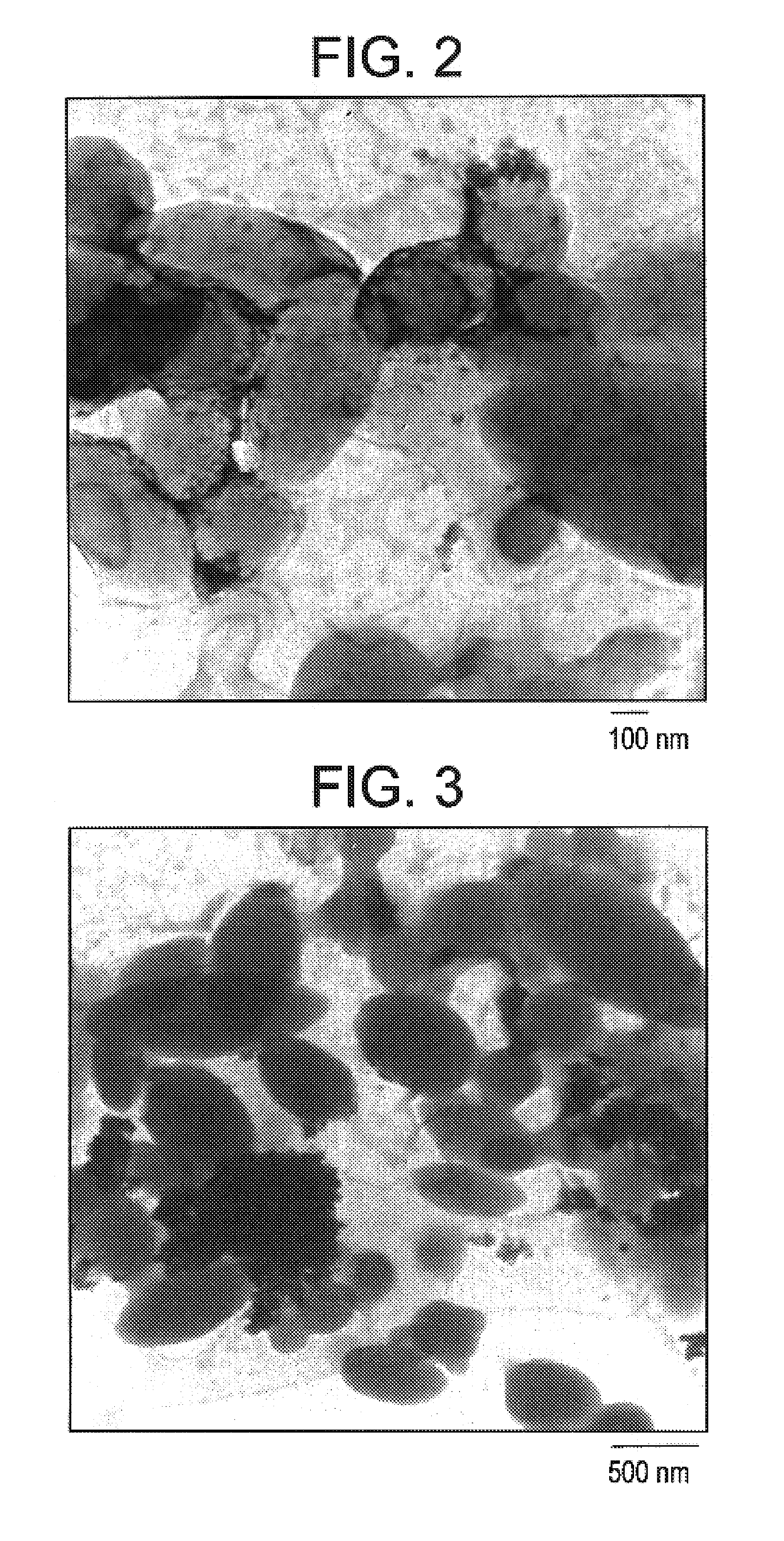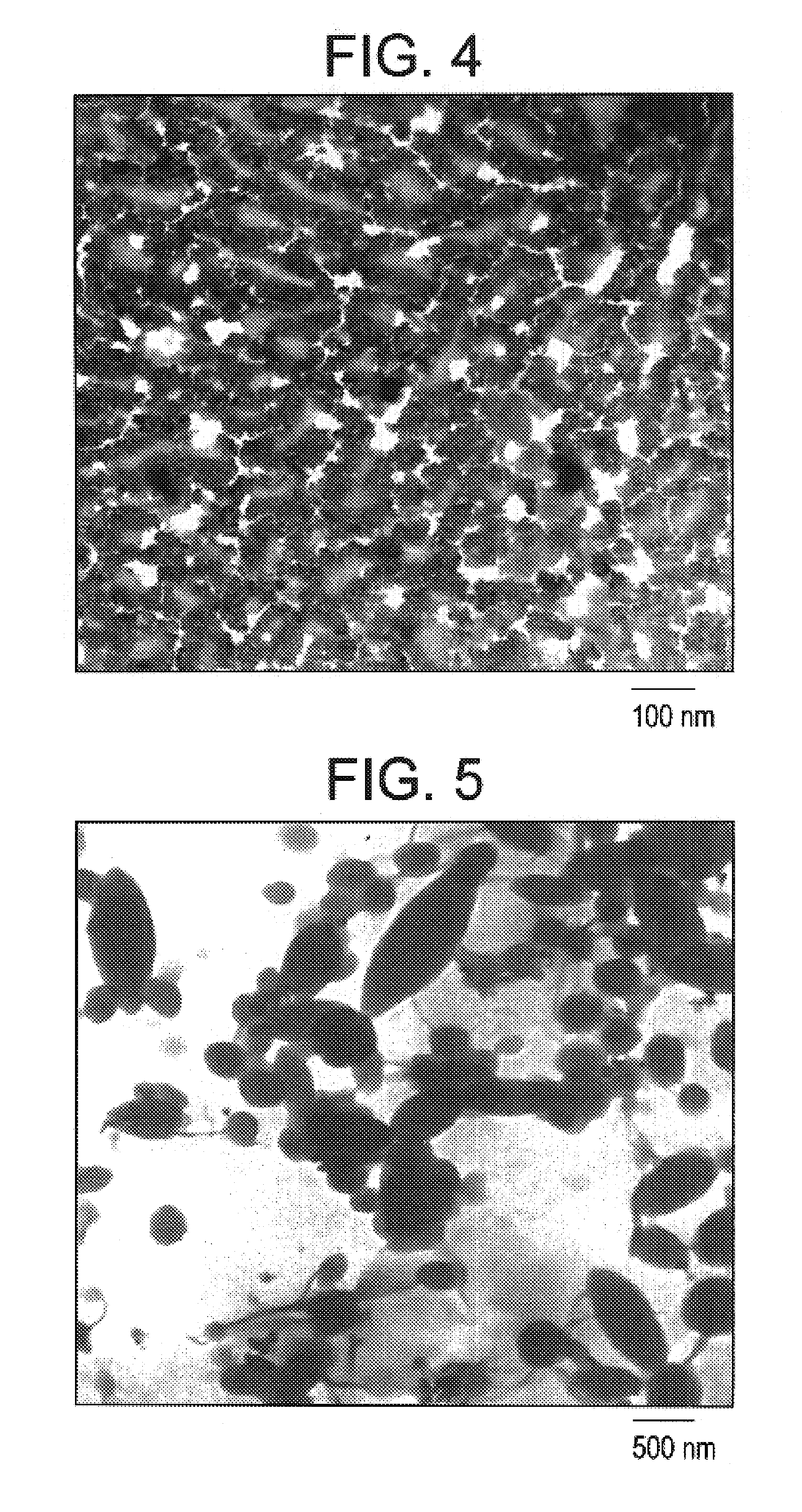Polymeric encapsulation of nanoparticles
- Summary
- Abstract
- Description
- Claims
- Application Information
AI Technical Summary
Benefits of technology
Problems solved by technology
Method used
Image
Examples
example 1
Synthesis of Magnetic Nanoparticles of Polyethylene Wax
[0078]A. Synthesis and Modification of Maghemite Particles
[0079]Iron oxide (γFe2O3) particles having an average diameter range between about 5 and 10 nm were synthesized using a three-step process of (i) coprecipitation of ferrous chloride and ferric chloride by sodium hydroxide, (ii) peptidization with nitric acid, and (iii) sonication. Ferrous chloride and ferric chloride were mixed in a molar ration of 1:2 in deionized water at a concentration of 0.1 M iron ions, and this solution was used immediately after preparation. A 10 M concentration solution of sodium hydroxide was added to it for coprecipitation with continuous stirring. Next, the solution with the precipitate was stirred at a high speed for one hour at 20° C., and then heated to 90° C. for one hour with continuous stirring. The ultrafine magnetic particles obtained were peptized by nitric acid (2M). Subsequently, the iron oxide dispersion was sonicated for 10 min. a...
example 2
Protein Coupling with the Polyethylene Composite Particles
[0087]An appropriate amount of a ligand was dissolved in an adsorption buffer (sodium acetate / acetic acid, pH 5). (The amount of protein needed to form a monolayer around the magnetic nanoparticles can be calculated as described in U.S. Pat. No. 3,857,931.) Avidin was used as ligand, as it has a strong bond forming ability with various ligands used in immunoassays. A polyethylene magnetic particle suspension (in the same buffer, 10% solid) was added to the protein solution and mixed gently for about 1 to 2 hours. The suspension was then incubated at room temperature for about 2 hours. The resulting mixture was then centrifuged. The supernatant was tested (using a BCA protein assay kit and a Turner spectrophotometer (SP 830) at a wavelength of about 562 nm) to determine the amount of bound proteins.
[0088]Protein coupling efficiency was measured for the composite particles. It was found that only 30% of the calculated amount of...
example 3
Morphology of the Polyethylene Composite Particles
[0089]Optical microscopy, scanning transmission electron microscopy, and atomic force microscopy studies were performed on the composite particles described in Examples 1 and 2.
[0090]A. Microscopy Procedures
[0091]Optical Microscopy was performed in a Leica DMIL Inverted Fluorescence Microscope (magnification ×1000) fitted with a Diagnostic High Resolution Spot Camera controlled by software interfaced with a PC.
[0092]Scanning Transmission Electron Microscopy (STEM) was performed in a JEOL 2010 microscope operated at 200 KV. Bright field imaging techniques were used to image the samples by selecting the transmitted diffraction spot to form the image. An ATM CCD Camera and software carry the image acquisition. One drop of polyethylene composite particles in acetone was placed on a carbon coated copper grid, dried, and observed under the microscope.
[0093]A D-3000 Nanoscope from Digital Instruments was used in tapping mode. One drop of sa...
PUM
| Property | Measurement | Unit |
|---|---|---|
| Temperature | aaaaa | aaaaa |
| Temperature | aaaaa | aaaaa |
| Temperature | aaaaa | aaaaa |
Abstract
Description
Claims
Application Information
 Login to View More
Login to View More - R&D
- Intellectual Property
- Life Sciences
- Materials
- Tech Scout
- Unparalleled Data Quality
- Higher Quality Content
- 60% Fewer Hallucinations
Browse by: Latest US Patents, China's latest patents, Technical Efficacy Thesaurus, Application Domain, Technology Topic, Popular Technical Reports.
© 2025 PatSnap. All rights reserved.Legal|Privacy policy|Modern Slavery Act Transparency Statement|Sitemap|About US| Contact US: help@patsnap.com



